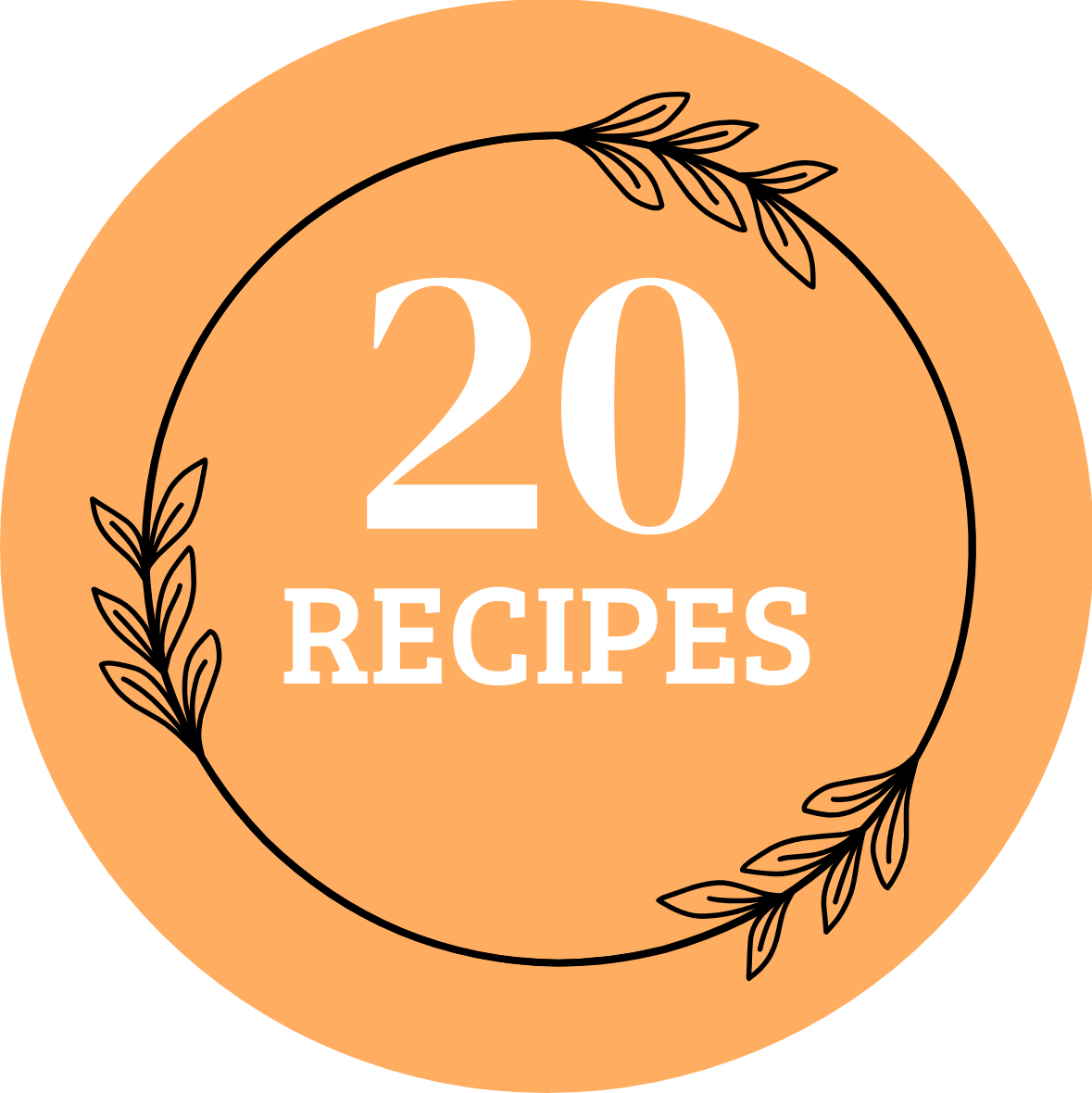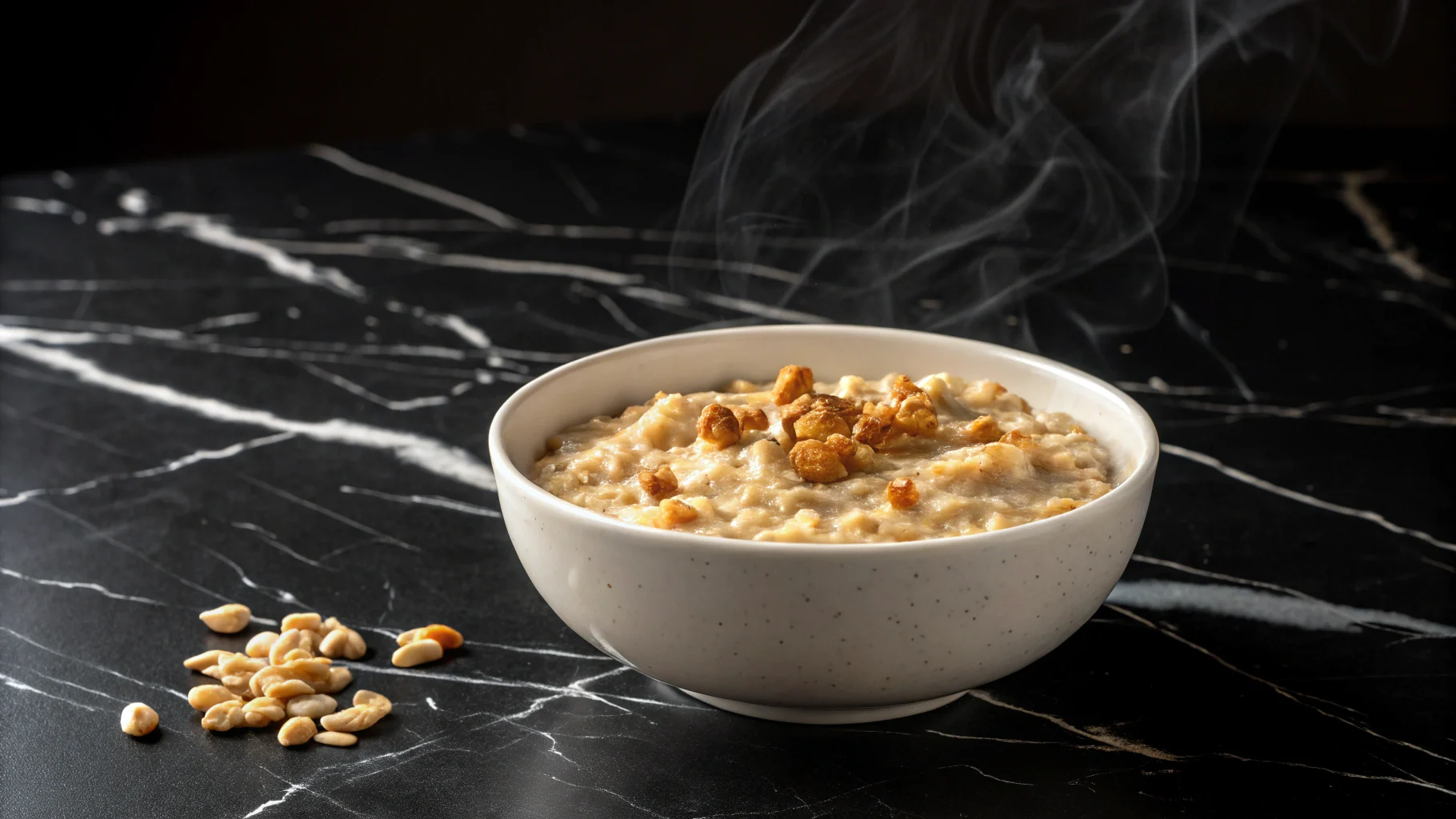Oatmeal is widely recognized as a nutritious and versatile breakfast option. However, understanding what not to mix with oatmeal is crucial to maintaining its health benefits. The ingredients you choose can greatly impact its nutritional value, digestibility, and flavor. By avoiding certain ingredients, you can enjoy a delicious and balanced oatmeal bowl that fuels your body and mind.
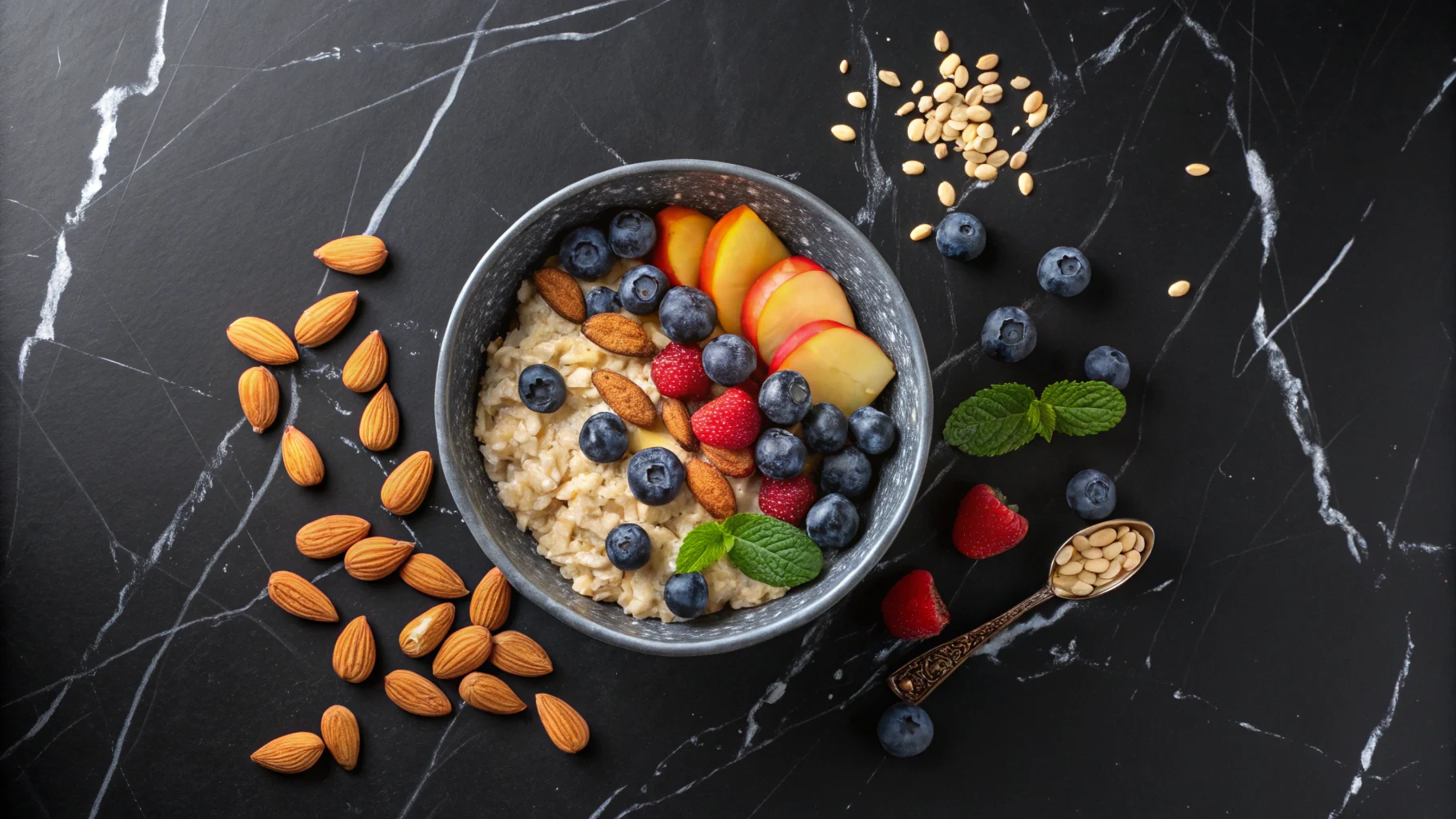
For more ways to enhance your oatmeal, check out this guide on Protein Baked Oatmeal, which offers nutrient-packed breakfast ideas.
Why Knowing What Not to Mix with Oatmeal Is Important
Mixing the wrong ingredients with oatmeal can:
- Lead to digestive discomfort
- Cause blood sugar spikes and energy crashes
- Reduce the overall nutritional value of your meal
Understanding what not to mix with oatmeal ensures your breakfast remains both healthy and satisfying.
Foods You Should Avoid Mixing with Oatmeal
1. High-Sugar Additives: What Not to Mix with Oatmeal for Blood Sugar Control
Adding refined sugars or flavored syrups can turn a healthy breakfast into a sugar-heavy meal.
Why to Avoid:
- Causes blood sugar spikes and crashes
- Leads to weight gain
- Adds empty calories without nutrients
Better Alternative: Use natural sweeteners like honey, maple syrup, or fruit purees in moderation.
2. Artificial Sweeteners: A Common Mistake in Oatmeal
Although calorie-free, artificial sweeteners can negatively impact digestion and gut health.
Why to Avoid:
- Can lead to bloating and digestive discomfort
- May alter gut bacteria balance
Better Alternative: Opt for stevia or monk fruit for a more natural, gut-friendly sweetness.
3. Citrus Fruits: Why They’re on the List of What Not to Mix with Oatmeal
Oranges and grapefruits are healthy, but they can clash with oatmeal’s creamy texture.
Why to Avoid:
- The acidic content can upset digestion
- Creates an unpleasant flavor combination
Better Alternative: Choose fruits like berries, bananas, or apples for better digestion and flavor balance.
4. Dairy Products: A Hidden Ingredient You Should Not Mix with Oatmeal
For those with lactose intolerance, adding dairy to oatmeal can cause discomfort.
Why to Avoid:
- Leads to bloating and gas
- Can make oatmeal feel heavy
Better Alternative: Swap dairy for plant-based milks like almond, oat, or coconut milk for a lighter, creamier texture.
5. Processed Protein Powders: A Nutritional Mistake in Oatmeal
Many commercial protein powders contain additives that lower oatmeal’s health value.
Why to Avoid:
- Contains artificial sweeteners and flavors
- May have unnecessary fillers
Better Alternative: Add chia seeds, flaxseeds, or nut butters for a natural protein boost. For more ideas, explore this article on Gluten-Free Meatball Binder Alternatives.
Healthy Alternatives to Ingredients You Should Not Mix with Oatmeal
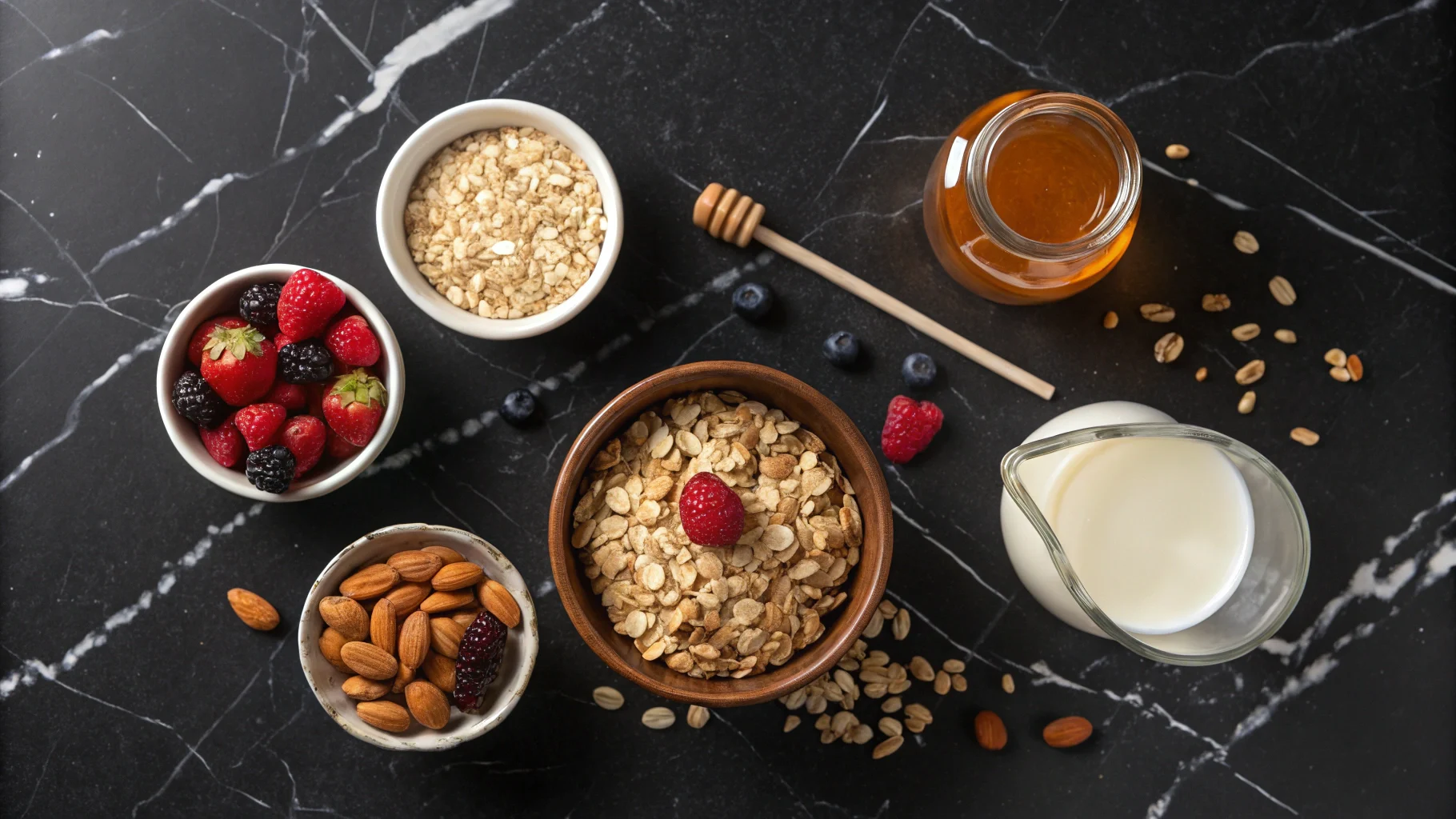
Natural Sweeteners:
- Honey
- Maple syrup
- Mashed bananas
Plant-Based Protein Sources:
- Chia seeds
- Flaxseeds
- Almond butter
Gut-Friendly Fruits:
- Berries
- Bananas
- Apples
Expert Tips on What Not to Mix with Oatmeal and How to Improve It
Knowing what not to mix with oatmeal is just as important as selecting the right ingredients to enhance its flavor and nutrition. By making smarter choices, you can turn your oatmeal into a balanced, energizing, and delicious meal. Here are expert tips on how to avoid common oatmeal mistakes and improve your breakfast bowl.
1. Balance Your Macros for Sustained Energy
One of the most important tips for a healthy oatmeal bowl is to balance your macronutrients. Oatmeal is naturally high in complex carbohydrates, but it needs the right balance of fiber, healthy fats, and protein to keep you full and energized.
How to Balance Macros in Oatmeal:
- Add Healthy Fats: Include chia seeds, flaxseeds, or a spoonful of nut butter for lasting energy.
- Incorporate Protein: Mix in Greek yogurt, plant-based protein powder, or hemp seeds for added protein.
- Include Fiber: Top with berries, apples, or bananas for natural fiber and antioxidants.
Balancing these macros prevents blood sugar spikes and provides long-lasting fuel for your body.
2. Use Whole, Unprocessed Ingredients
One of the biggest mistakes in what not to mix with oatmeal is adding processed or artificial ingredients. These additives can strip away oatmeal’s natural health benefits and contribute to digestive discomfort.
Whole Ingredients to Use in Oatmeal:
- Natural Sweeteners: Honey, maple syrup, or mashed bananas instead of refined sugars.
- Unprocessed Grains: Stick to steel-cut oats, rolled oats, or old-fashioned oats.
- Fresh Fruits: Use fresh or frozen berries, apples, and bananas instead of sugary dried fruits.
For more insight on choosing whole, clean ingredients, explore this guide on Healthy Eating Tips for long-term wellness.
3. Add Texture for Better Flavor and Satisfaction
Texture plays a big role in making oatmeal more enjoyable. Adding crunchy and chewy elements creates a more satisfying and flavorful bowl.
How to Add Texture to Oatmeal:
- Crunchy Add-ins: Sprinkle toasted nuts (almonds, walnuts) or seeds (pumpkin, sunflower) for crunch.
- Creamy Elements: Swirl in nut butters or Greek yogurt for creaminess.
- Chewy Ingredients: Mix in dried fruits like raisins or dates (in moderation).
For expert texture tips in all your meals, check out this guide on What Keeps Chicken Crispy to master crunch and crispiness in your cooking.
4. Don’t Overload with Dense Ingredients
A common oatmeal mistake is adding too many dense, heavy ingredients. Overloading your bowl with nut butters, protein powders, and seeds can make your oatmeal overly thick and hard to digest.
How to Keep Oatmeal Light and Balanced:
- Limit heavy mix-ins: Use 1–2 tablespoons of nut butter or chia seeds instead of piling them on.
- Add moisture: Use plant-based milk or water to maintain a creamy texture.
- Incorporate fruits: Fresh fruits like berries and bananas can lighten up the dish.
Avoiding too many dense toppings ensures your oatmeal remains satisfying without feeling too heavy.
5. Prioritize Digestive Health
Ingredients that are hard to digest can ruin your oatmeal experience. It’s essential to avoid foods that disrupt gut health.
Gut-Friendly Ingredients for Oatmeal:
- Probiotics: Add a spoonful of unsweetened Greek yogurt for gut support.
- Prebiotics: Include bananas or chia seeds for digestive health.
- Avoid: Processed sweeteners and heavy dairy products, which can irritate the gut.
For more ways to support digestion naturally, check out this guide on Improving Gut Health.
6. Control Portion Sizes for Balance
Even healthy toppings can become unhealthy if used in excess. Portion control is crucial for keeping your oatmeal balanced and nutritious.
Portion Guidelines for Oatmeal:
- Oats: ½–1 cup of rolled oats or steel-cut oats.
- Nut Butters: Limit to 1 tablespoon to avoid excess fat and calories.
- Seeds: Use 1–2 teaspoons of chia or flaxseeds for added fiber.
Sticking to reasonable portion sizes prevents your oatmeal from becoming too calorie-dense.
7. Experiment with Savory Oatmeal
While sweet oatmeal is common, savory versions can be a delicious and nutrient-rich option. Avoid sugary mix-ins and try savory ingredients for a new twist.
Savory Oatmeal Ideas:
- Avocado and Egg: Top oatmeal with sliced avocado, a poached egg, and chili flakes.
- Spinach and Mushrooms: Stir in sautéed spinach, mushrooms, and a sprinkle of Parmesan cheese.
- Tomato and Basil: Mix in cherry tomatoes, basil, and a drizzle of olive oil.
Savory oatmeal can be a creative way to balance fiber, protein, and healthy fats.
Final Thoughts on What Not to Mix with Oatmeal
By following these expert tips on what not to mix with oatmeal, you can create a breakfast that’s not only nutritious but also delicious and satisfying. Avoiding processed ingredients, balancing your macros, and adding texture can turn ordinary oatmeal into a superfood powerhouse.
Make smarter ingredient choices and elevate your oatmeal with whole foods, healthy fats, and gut-friendly add-ins. Let every bite be nourishing, energizing, and packed with flavor!
FAQs About What Not to Mix with Oatmeal
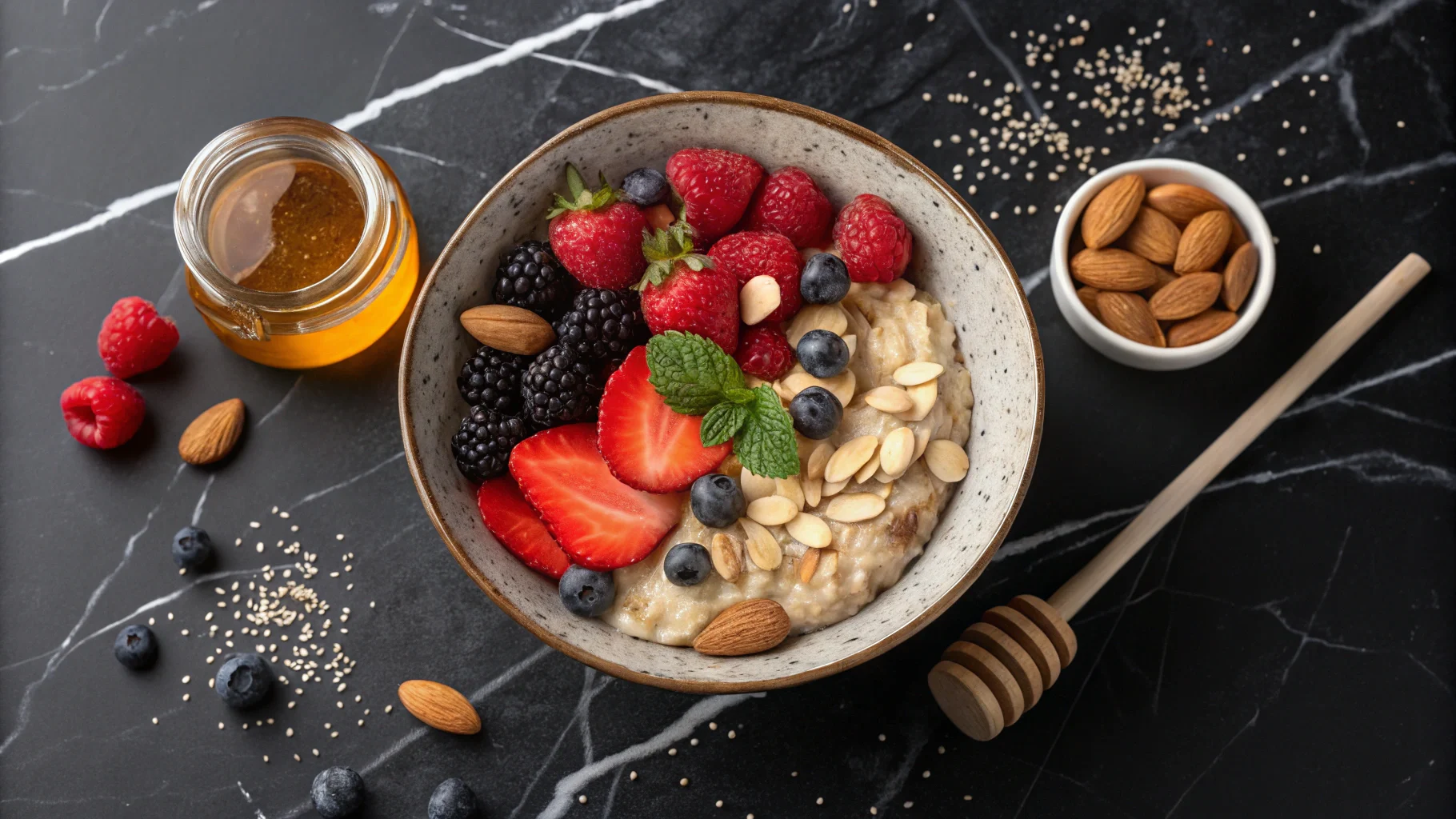
1. Can I Add Yogurt to Oatmeal?
Yes! Adding yogurt can be a healthy choice, but it’s important to know what not to mix with oatmeal to maintain its health benefits. Choose unsweetened Greek yogurt for added protein and creaminess without the extra sugar.
Tip:
- Stick to plain yogurt to avoid unnecessary sugar and additives.
- Avoid flavored yogurts, as they are high in added sugars, which fall under what not to mix with oatmeal.
2. Is Peanut Butter Good in Oatmeal?
Absolutely! However, when considering what not to mix with oatmeal, avoid processed peanut butter with added sugars and hydrogenated oils.
Tip:
- Choose natural peanut butter made from 100% peanuts.
- Be cautious of sweetened nut butters, which are what not to mix with oatmeal if you’re aiming for a balanced meal.
3. Why Is My Oatmeal Too Dense?
One common mistake in what not to mix with oatmeal is adding too many heavy ingredients like nut butters, protein powders, and chia seeds. This can make oatmeal overly dense and hard to eat.
Tip:
- Balance is key! Avoid loading oatmeal with multiple dense foods, which is a perfect example of what not to mix with oatmeal.
- Add plant-based milk or water to lighten the consistency.
4. Can I Add Chocolate to Oatmeal?
Yes, but it’s important to know what not to mix with oatmeal when it comes to chocolate. Avoid using milk chocolate or sugary chocolate syrups, which are high in sugar and unhealthy fats.
Tip:
- Use dark chocolate or cacao nibs in moderation.
- Avoid processed chocolate products, as they are definitely what not to mix with oatmeal if you want a nutritious meal.
5. Can I Add Protein Powder to Oatmeal?
Yes, but selecting the right type of protein powder is essential. Many protein powders fall under what not to mix with oatmeal due to their artificial sweeteners and additives.
Tip:
- Choose a clean, natural protein powder with minimal ingredients.
- Avoid processed protein powders with artificial flavors, as they are a key example of what not to mix with oatmeal.
6. Can I Add Fruit Juices to Oatmeal?
No, adding fruit juices is a clear example of what not to mix with oatmeal. Fruit juices are high in sugar and lack fiber, making them a poor choice for oatmeal.
Tip:
- Use whole fruits instead of juice for natural sweetness and fiber.
- Avoid sugary fruit juices, which are what not to mix with oatmeal for a healthy meal.
7. Can I Cook Oatmeal with Milk Instead of Water?
Yes, but it’s important to consider the type of milk. Using heavy creams or full-fat milk is what not to mix with oatmeal if you’re trying to keep it light and healthy.
Tip:
- Choose plant-based milks like almond milk or oat milk.
- Avoid sweetened or flavored milks, as they are what not to mix with oatmeal due to high sugar content.
8. Can I Add Granola to Oatmeal?
Yes, but it’s important to avoid store-bought granola that’s loaded with sugar and oils. This is exactly what not to mix with oatmeal if you’re aiming for a nutritious meal.
Tip:
- Use homemade granola or low-sugar granola in moderation.
- Avoid candied granola with chocolate chips and syrups, as they are definitely what not to mix with oatmeal.
9. Can I Add Citrus Fruits to Oatmeal?
It’s best to avoid citrus fruits when considering what not to mix with oatmeal. Their high acidity can disrupt digestion and clash with oatmeal’s creamy texture.
Tip:
- Use fruits like berries, bananas, or apples instead.
- Avoid oranges, lemons, and grapefruits, which are what not to mix with oatmeal for a smoother texture.
Final Thoughts on What Not to Mix with Oatmeal
Understanding what not to mix with oatmeal is essential for creating a balanced, nutritious, and satisfying breakfast. Ingredients like high-sugar additives, artificial sweeteners, acidic fruits, and processed proteins can reduce the health benefits of oatmeal.
By avoiding these ingredients and choosing whole, nutrient-dense foods, you can maximize oatmeal’s natural benefits and enjoy a more delicious and energizing meal.
Make smarter choices by focusing on natural sweeteners, plant-based proteins, and gut-friendly fruits—and always remember what not to mix with oatmeal to keep your breakfast as healthy and tasty as possible!
Conclusion
Understanding what not to mix with oatmeal is crucial for maximizing its health benefits and ensuring that your breakfast remains both nutritious and satisfying. While oatmeal is naturally rich in fiber, vitamins, and minerals, the ingredients you add can either enhance or diminish its nutritional value.
By avoiding common oatmeal mistakes—such as adding high-sugar additives, artificial sweeteners, acidic fruits, and processed protein powders—you protect the integrity of this superfood. Instead, focus on incorporating wholesome alternatives like natural sweeteners, plant-based proteins, and gut-friendly fruits that support sustained energy and overall wellness.
Why Smarter Ingredient Choices Matter
- Balanced Nutrition: Combining oatmeal with the right mix of fiber, healthy fats, and plant-based proteins ensures a more filling and balanced meal.
- Sustained Energy: Avoiding sugar-heavy toppings helps prevent blood sugar spikes and energy crashes, keeping you energized throughout the day.
- Better Digestion: Swapping out problematic ingredients for gut-friendly foods supports smoother digestion and nutrient absorption.
- Enhanced Flavor: Thoughtfully selected ingredients not only boost the health benefits of oatmeal but also make it more enjoyable to eat.
Take Action for a Healthier Breakfast
Start your mornings by making smarter ingredient choices and turning your oatmeal into a powerhouse of nutrition. Prioritize whole, unprocessed foods that nourish your body, satisfy your hunger, and align with your health goals.
For even more ways to improve your oatmeal, explore this guide on Protein Baked Oatmeal for delicious, nutrient-packed recipes.
By being mindful of what not to mix with oatmeal, you can elevate your breakfast routine and fuel your body with energy-boosting, health-enhancing ingredients.
